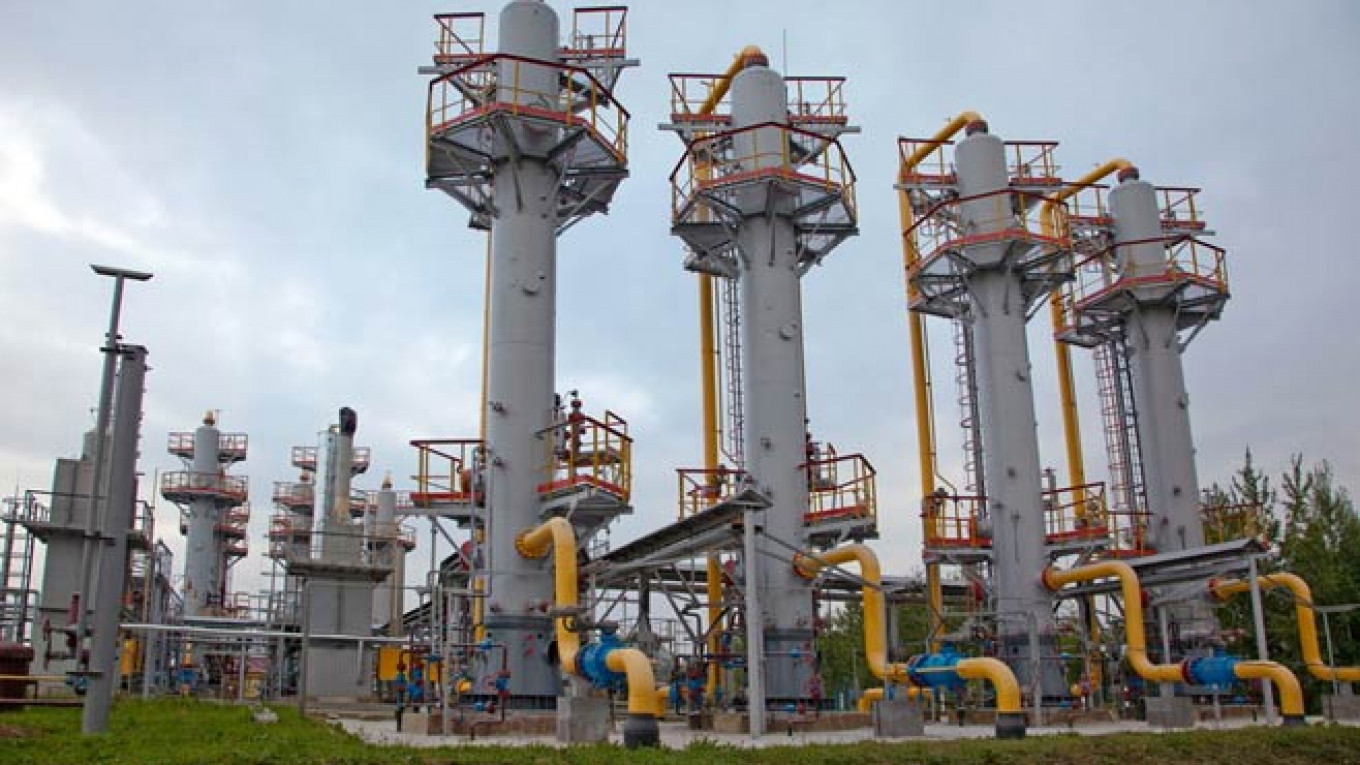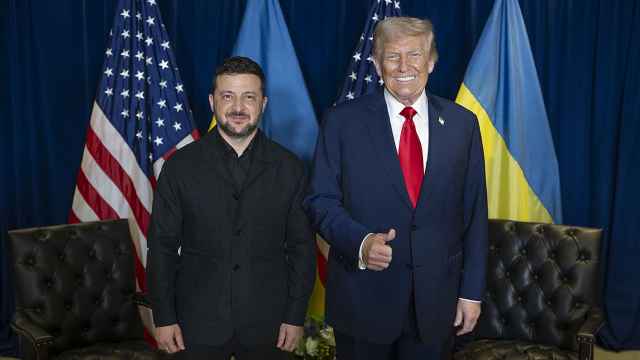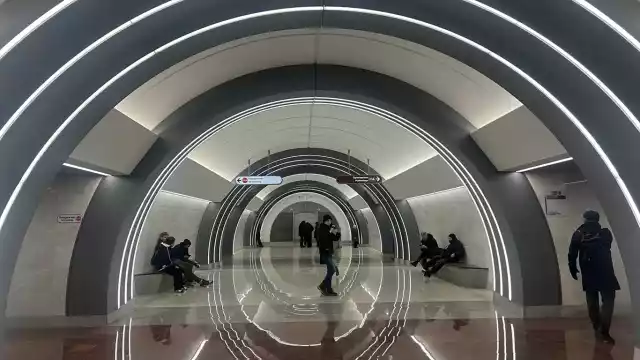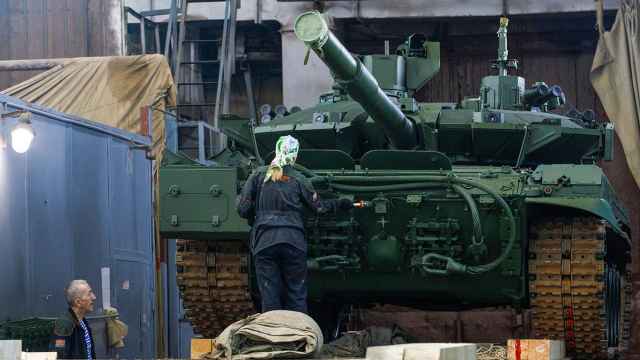Reverse flows of natural gas from Europe to Ukraine to help it handle Russian price increases and supply cuts would be possible within hours once the infrastructure is in place, but the flows could require approval from Russia's Gazprom first.
Ukraine is in emergency talks with the European Union on importing gas from the West, pumping gas in the opposite direction to the original design of the pipelines, following a leap in the price Gazprom charges it for supplies.
Relations between Ukraine and Russia have been in crisis since popular protests in Kiev ousted pro-Russian President Viktor Yanukovych in February, after which Russia seized Ukraine's Crimea region and formally annexed it last month.
Slovakia is the EU's best-placed country to pump gas to Ukraine should Russia cut supplies, but reversing flows along any of the four pipelines that take Russian gas to Slovakia via Ukraine would breach the terms of its contracts with state-controlled Gazprom, a spokesman for Slovak pipeline operator Eustream said.
"For a reverse flow, you would have to stop the East-West flow in one of the [four] pipelines and reverse the flow. But you would have to have approval from Gazprom," the spokesman said.
"Gazprom does not agree with this [reverse flows], and thus it is not an option," he added.
Gazprom chief executive Alexei Miller raised questions about the legality of reversing gas flows to Ukraine in an interview aired on Russian state television on Saturday.
Gazprom would be able to monitor whether gas is being re-exported to Ukraine because Slovakia would have to build a metering station before reverse flows can start.
Officials from Norway and the Netherlands, other large gas suppliers, have already said they would be unable to supply Ukraine and other European countries with substantial amounts of gas in the event of a Russian supply cut.
An industry source earlier told Reuters that the cost of building the metering station in Slovakia and making some minor technical adjustments was about 20 million euros ($27 million) and would take nine months to complete.
Slovakia is looking at the option of pumping about 10 billion cubic meters of gas per year to Ukraine, enough to meet about 18 percent of Ukrainian demand, the Eustream spokesman said.
Eustream said it was working with Ukrainian pipeline operator Ukrtransgas to try to ensure that reverse flows could start by the winter, when demand for gas peaks. It has already built a compressor station to drive gas eastward.
Previous gas crises have disrupted Russian supplies to Ukraine, a major transit route for Russian gas, and interrupted onward flows to Europe.
Technically Possible
EU member states have been reversing gas flows between themselves for more than a decade, and the European gas transmission network is now closely integrated.
Fluxys Belgium, which operates gas transmission infrastructure and storage facilities, has been able to reverse gas flows since 1998, when the Interconnector pipeline opened between Bacton in Britain and Zeebrugge in Belgium.
"Most of our interconnection points, including the Interconnector Zeebrugge Terminal, can be switched from import to export and vice-versa," a Fluxys spokesman said.
"It is just a question of a couple of hours before you can switch from one to the other direction."
Before it was able to reverse flows, Fluxys had to link up an existing pipeline to a compressor station to change the pressure of the gas and install a mechanism similar to a valve that monitors the flow of gas in the reverse direction.
Gas is driven through a pipeline by a pressure gradient, moving from an area of high pressure to one of low pressure, so for flows to be reversed, the end of the pipeline with high pressure and the one with low pressure must be switched.
Before that can take place, flows in the original direction must be halted for several hours.
How Gas Flows Are Reversed
Most of Europe's gas pipelines were designed to only send gas in one direction, for instance from Russia westward through Ukraine and into the EU.
So-called "reverse gas flows" allow gas to flow in the opposite direction, potentially providing a lifeline to Ukraine should Russia cut supplies.
Below is a summary of some of the technical and engineering requirements to enable reverse flows:
* Reverse flows within the EU are legal and already in wide use, but the required facilities in central Europe, where gas could be sent from the EU to Ukraine, still need adjusting.
* The European Commission says that typical equipment needed for reverse flows are pressure reduction stations or compression stations that have measuring devices, valves, pressure regulators, safety valves, filters, heat exchangers.
* Compressor Station: To allow reverse flows of a pipeline that was originally designed to only pump in one direction, operators must increase the pressure at the end of the pipeline that was initially designed to receive the gas.
In order to do so, a compressor station is built. A pressure reducing station may also be installed at the other end in order to draw the gas back along the pipeline.
* Monitoring Facility: Operators also install a mechanism similar to a valve that monitors the flow and pressure of gas in the reverse direction.
Europe's typical pipeline pressure is about 80 bar, and in order to reverse flows, the pressure at one end is raised to over 120 bar, creating a pressure gradient as the operator will decrease the pressure at the other end.
* Gas Filter: Prior to being sent through a pipeline, operators filter the gas. In the case of reverse flowing, a filter facility must therefore also be built on the side of the pipeline that was originally designed only to receive gas.
Source: Reuters
A Message from The Moscow Times:
Dear readers,
We are facing unprecedented challenges. Russia's Prosecutor General's Office has designated The Moscow Times as an "undesirable" organization, criminalizing our work and putting our staff at risk of prosecution. This follows our earlier unjust labeling as a "foreign agent."
These actions are direct attempts to silence independent journalism in Russia. The authorities claim our work "discredits the decisions of the Russian leadership." We see things differently: we strive to provide accurate, unbiased reporting on Russia.
We, the journalists of The Moscow Times, refuse to be silenced. But to continue our work, we need your help.
Your support, no matter how small, makes a world of difference. If you can, please support us monthly starting from just $2. It's quick to set up, and every contribution makes a significant impact.
By supporting The Moscow Times, you're defending open, independent journalism in the face of repression. Thank you for standing with us.
Remind me later.






